 The Balisong Collector Reviews
The Spyderco Szabofly
The Balisong Collector Reviews
The Spyderco SzaboflyThe Balisong Collector Reviews The Spyderco Szabofly
The Szabofly features classic, sandwich-style construction. Each handle consists of two "slabs" with spacers between them
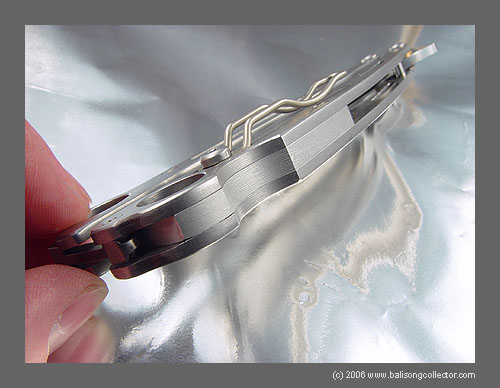
The picture above shows the opposite handle. The spacer is steel. It's very large and very heavy. It gives the opposite handle considerable momentum which helps this knife flip very well.
Meanwhile, the slabs on the safe handle are held apart by just three spacers which keeps the overall weight of the knife down.
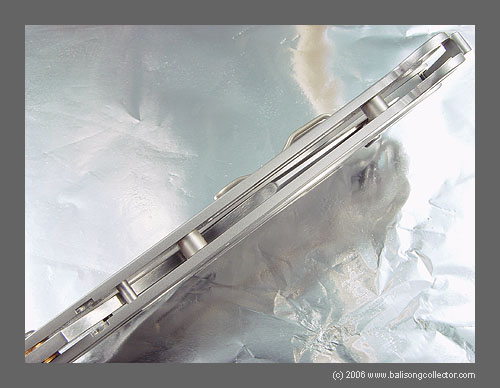
The Szabofly features a spring-loaded latch that stays out of the way during manipulation. You can see the spring in the picture below.
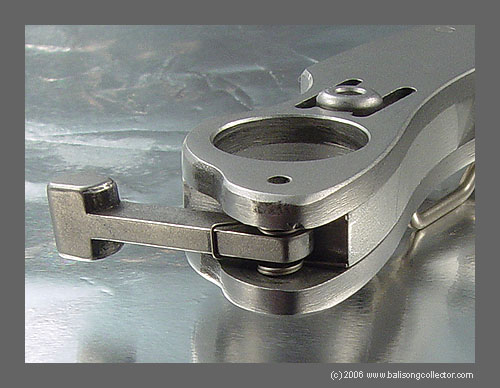
Like the Spyderfly, the Szabofly latches closed, but not open. In some states -- including, significantly, Colorado where the Szabofly is made -- allowing a balisong knife to latch closed but not open makes the knife legal to carry. Obviously, the reader is strongly advised to check his local knife laws before carrying the Szabofly... or any other balisong-style knife.
The Szabofly latch is on the opposite handle in the classic Batangas style. It can not move moved to the safe handle nor can the handles be reversed on the blade. The Szabofly will always be Batangas-style... unless, of course, you remove the latch entirely which is possible. Some balisong artists do prefer a latchless knife even over a spring-loaded one.
You can also see the large, round holes in the handles. Spyderco invented the now-popular idea of a hole in the blade of a folding knife to assist opening. A large round hole remains Spyderco's registered trademark today. Just about all Spyderco folding knives have one... and their butterfly knives have two. These holes can be used for a variety of Spyderco-unique balisong manipulations.
Many sandwich-style balisongs use a double tang-pin design. The Spyderfly does. The Szabofly has only one tang pin which stops the handles and secures the knife open.
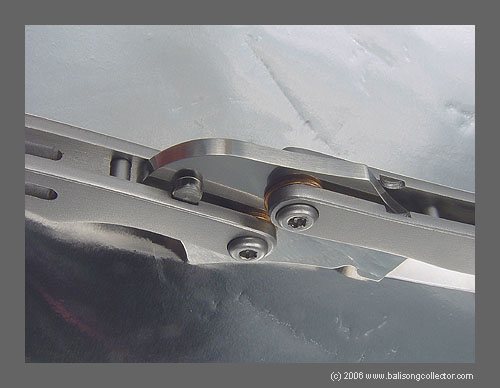
In the picture above, you can also see the adjustable pivot pins and phosphor-bronze washers which make the Szabofly very smooth to manipulate. Notice, also, how open the construction is. While the Szabofly can be disassembled for cleaning, most users will never find that necessary. I also like this very open design because it allows all mechanisms of the knife to be visually inspected quickly and easily. If any part is wearing or developing any problem, you'll spot it before it causes a problem.
To stop the handles when the knife is closed, the Szabofly uses two of the three spacer pins in the safe handle (you can them in the picture of the spacer pins above) and one extra pin in the opposite handle. The spacer pin in the opposite handle mates with that strange sort of choile in the ricasso. Remember what I said about every aspect of the shape of this knife having a function? This sort of choile on the blade is neither a sharpening choile (which the Szabofly sadly lacks, in my opinion) or a grip choile. This is a sort of new thing, what one might call a "locking choile."

The pocket clip is very similar to the Spyderfly's. In my review of the Spyderfly, I noted that I'm not a big fan of pocket clips on knives. I find they do more damage than good... literally. Most pocket clips are made of sheet metal and they have rough edges. If you squeeze to get between two parked cars with a knife clipped to your pocket, you could leave a nasty scratch. If you simply brush against furniture with a knife clipped to your pocket, you could cause expensive damage. And the clips just destroy the pockets on your pants. Spyderco has made pocket clip for the Spyderfly and now the Szabofly from wire... round wire. There's not an abrupt or rough edge on it. It's very nice, and it works well too.
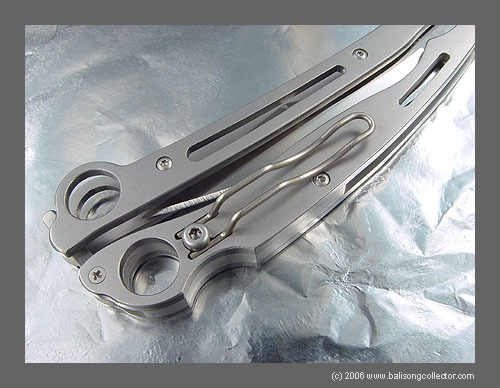
The clip is on the opposite handle. It can be removed or it can be moved to the other side of the opposite handle for left-side carry. But, it can't be moved to the safe handle. The safe handle, being much narrower, just doesn't accommodate the clip.
